| BrianRxm | Coin Stories | 1/16 |
| The World War II Hesse Crown Jewels Robbery |
Germany Prussia gold 1888 10 Marks
| Prev | Back | Next |
The Hesse Crown Jewels robbery was committed by three American Army officers stationed in Germany
after the end of World War II in 1945.
The trio got away with several million dollars worth of jewels and gold belonging to one of the
royal families of Germany, the Hesse family.
They also got away with a German gold 10 mark coin.
The Coin:
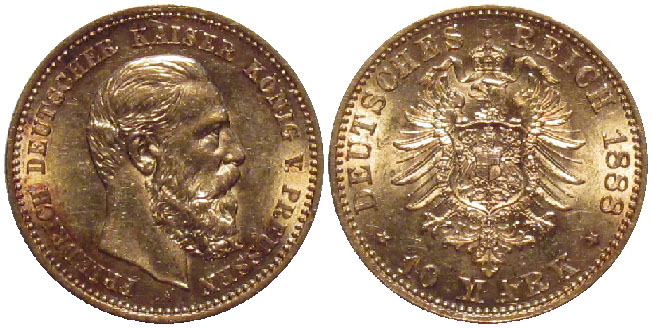
1. Germany Prussia 10 Marks 1888-A (Berlin) - Frederick III
Gold, 19 mm, 3.98 gm, fineness: 0.900
Obverse:
FRIEDRICH DEUTSCHER KAISER KONIG V. PREUSSEN
(Frederick, Emperor of Germany, King of Prussia)
Reverse:
DEUTSCHES REICH 1888 / 10 MARK
(German Empire / 10 Marks)
FRIEDRICH DEUTSCHER KAISER KONIG V. PREUSSEN
(Frederick, Emperor of Germany, King of Prussia)
DEUTSCHES REICH 1888 / 10 MARK
(German Empire / 10 Marks)
The Story:
The Hesse Crown Jewels robbery was committed by three American Army officers stationed in Germany
after the end of World War II in 1945.
The trio got away with several million dollars worth of jewels and gold belonging to one of the
royal families of Germany, the Hesse family.
The account of the theft was given in in Kenneth Alford's 1994 book The Spoils of World War II.
One of the minor items of loot was a "German gold ten-mark coin with Frederick III" which was
otherwise unidentified.
The Hesse robbery was the largest single act of looting done by American soldiers in Germany.
The American Army took over Kronberg Palace (Schloss Friedrichshof), a late 1800's palace belonging
to the Hesse family and located near Frankfurt, Germany.
Kronberg Palace was built in 1889 by Empress Victoria, the wife of the German emperor and
King of Prussia Frederick III (the man on the coin).
She was a daughter of England's Queen Victoria and the mother of Kaiser Wilhelm II.
The Army turned the place into an Officer's club and hotel, and put a Captain Kathleen Nash
(Women's Army Corps or WAC) in charge.
In November of 1945, one of Captain Nash's soldiers went into the basement and saw something suspicious.
He got some German civilians to knock down a wall and discovered hundreds of bottles of wine.
He also noticed that the cement floor had been patched and called Nash who had the floor dug up.
A crate containing the crown jewels of Hesse was found, including tiaras, bracelets, and many other
valuable items.
Nash called her boyfriend, Colonel Jack Durant, to show him what they found.
The pair and a Major David Watson decided to help themselves and began separating the jewels
from the settings and mailing the items to relatives the United States.
Princess Sophia was a member of the Hesse family, and in 1946 she was planning to get married and
wanted to wear her jewels. When she could not get them, she complained and her complaints eventually
reached US Army investigators. Sophia was well connected, her brother Philip was also planning
to get married, to Elizabeth, the older daughter of Britain's King George VI.
Durant and Nash went back to the US while Watson stayed in Germany.
Army investigators followed the three and eventually arrested them.
Durant claimed that he sold some jewels to fences in Chicago, and buried some near
Falls Church, Virginia (attention metal detectors).
During the investigation, it was discovered that Watson had a girlfriend in Belfast, Northern Ireland.
He gave her some items and pawned some other items, including a "German gold ten-mark coin."
The coin was the property of Princess Mafalda, daughter of the king and queen of Italy,
who had married one of the Hesse family members, Prince Philipp.
"The ten-mark coin bore the head of Emperor Frederick III, grandfather of Princess Mafalda's husband,
and had been given to her by Queen Margaret of Italy".
The three officers were court-martialed in Germany, convicted, and sentenced to prison terms.
Most of the jewelry has not been recovered, and the thieves did so much damage to the settings that
the recovered items were worth one tenth of the previous value.
Some of the loot ended up with various other US officials, including some generals, but they
were not prosecuted.
There was a 2009 film made of this story called "The Hessen Conspiracy", but the film
changed many of the details from the actual case.
The "German gold ten-mark coin" was a one-year type because Frederick III was king of Prussia
for only about three months in 1888.
Sometimes something in the coin collector's psyche makes one want to have such a coin.
A visit to Kronberg Palace (Schloss Friedrichshof) and Frankfurt - March 2012
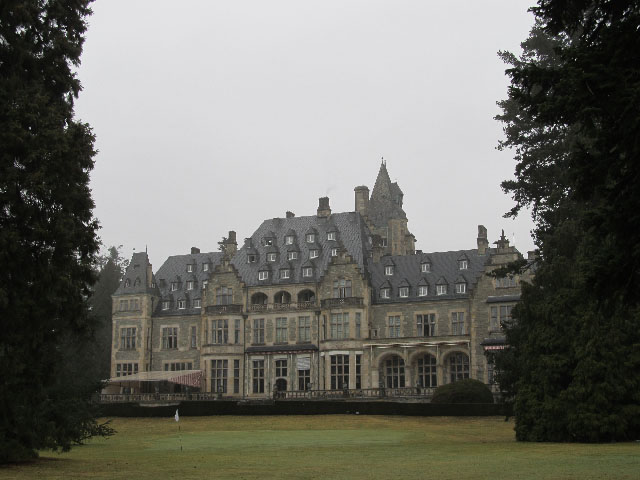
2. Kronberg Palace front
The scene of the crime, now a luxury hotel.
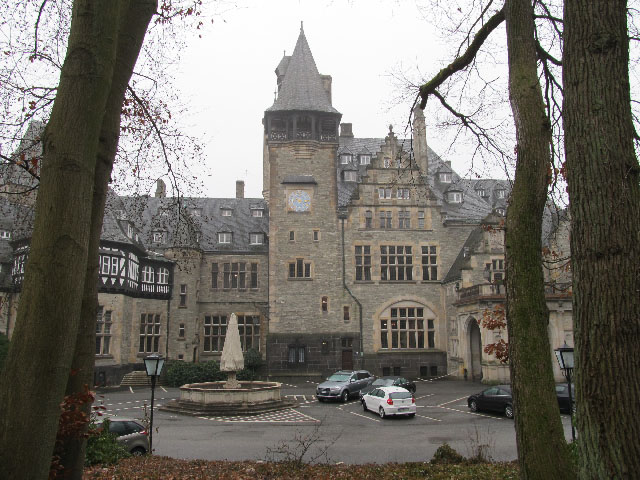
3. Kronberg Palace parking lot
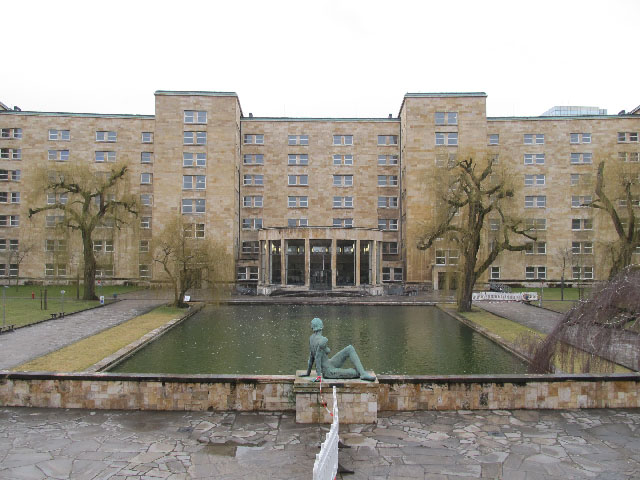
4. IG Farben building, Frankfurt
US Army Headquarters in 1947; the recovered jewels were kept here for exhibition.
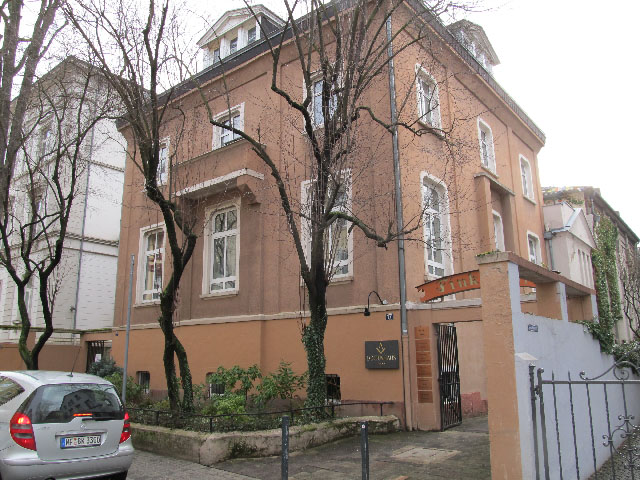
5. Masonic lodge on Finkenhof Strasse, Frankfurt
This was the Army's Community Center in 1947 and the site of the court-martials.
| Prev | Back | Next |